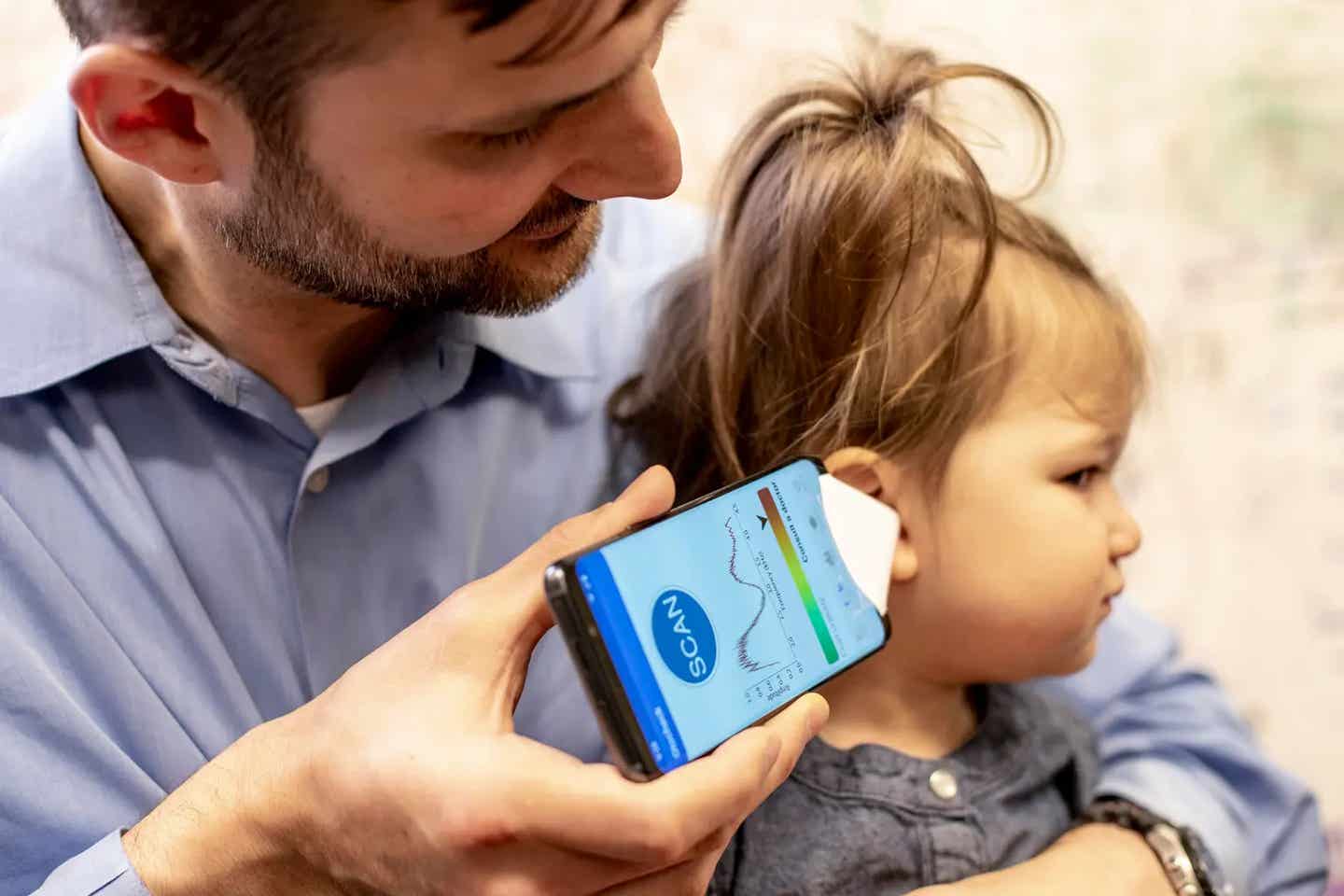Groundbreaking New AI Smartphone App Accurately Diagnoses Ear Infections
Physician-scientists have developed a new smartphone app utilizing artificial intelligence (AI) to accurately diagnose ear infections.

Physician-scientists have developed a new smartphone app utilizing artificial intelligence (AI) to accurately diagnose ear infections. (CREDIT: Creative Commons)
Physician-scientists at UPMC and the University of Pittsburgh have developed a new smartphone app utilizing artificial intelligence (AI) to accurately diagnose ear infections. The research, published in JAMA Pediatrics, suggests that this innovation could reduce unnecessary antibiotic usage in young children.
Ear infections, known as acute otitis media (AOM), are among the most common reasons for prescribing antibiotics to children. However, distinguishing AOM from other ear conditions requires specialized training. The new AI tool offers a straightforward solution, potentially surpassing the accuracy of trained clinicians.
"AOM is often misdiagnosed," explains senior author Alejandro Hoberman, M.D., emphasizing the significance of precise diagnosis to avoid both inadequate care and unnecessary antibiotic treatment. Hoberman, who serves as a professor of pediatrics at Pitt's School of Medicine and president of UPMC Children's Community Pediatrics, highlights the critical importance of correct diagnosis and treatment.
Images of eardrums from a healthy patient (left) or with acute otitis media (right) captured by the new smartphone app. (CREDIT: University of Pittsburgh)
Hoberman notes that approximately 70% of children experience an ear infection before their first birthday. Despite its prevalence, accurately diagnosing AOM necessitates expertise due to the challenge of discerning subtle visual cues, particularly in infants. AOM is frequently confused with otitis media with effusion, a condition that typically doesn't involve bacteria and doesn't benefit from antibiotics.
To develop an effective diagnostic tool, Hoberman's team compiled a library of 1,151 videos of the eardrum from 635 children seen at outpatient UPMC pediatric offices.
Expert reviewers trained the AI models by annotating these videos, distinguishing between AOM and other conditions.
Related News
"The eardrum, or tympanic membrane, is a thin tissue that stretches across the ear canal," Hoberman explains. "In AOM, the eardrum bulges, creating a central depression resembling a bagel hole, unlike otitis media with effusion."
Using 921 videos from the training library, the researchers taught two AI models to detect AOM by analyzing various features of the eardrum.
The models achieved high accuracy, with sensitivity and specificity exceeding 93%, indicating minimal false negatives and false positives. This outperformed the diagnostic accuracy of many clinicians, whose rates range from 30% to 84%.
"Our tool could significantly improve primary healthcare by aiding clinicians in accurately diagnosing AOM and guiding treatment decisions," Hoberman asserts.
Additionally, the captured videos can be stored in patients' medical records and shared with other providers, serving as valuable teaching aids for medical students, residents, and parents.
The figure shows the visual landscape with tympanic membrane frames clustered based on similarity (A), an example of 1 cluster evaluated by experts (B), and final landscape with expert determinations. (CREDIT: JAMA Pediatrics)
Hoberman envisions widespread implementation of this technology across healthcare provider offices to enhance the diagnosis of AOM and inform treatment decisions, potentially revolutionizing pediatric care.
Other authors on the study were Nader Shaikh, M.D., Shannon Conway, Timothy Shope, M.D., Mary Ann Haralam, C.R.N.P., Catherine Campese, C.R.N.P., and Matthew Lee, all of UPMC and the University of Pittsburgh; Jelena Kovačević, Ph.D., of New York University; Filipe Condessa, Ph.D., of Bosch Center for Artificial Intelligence; and Tomas Larsson, M.Sc, and Zafer Cavdar, both of Dcipher Analytics.
For more science and technology stories check out our New Discoveries section at The Brighter Side of News.
Note: Materials provided above by the The Brighter Side of News. Content may be edited for style and length.
Like these kind of feel good stories? Get the Brighter Side of News' newsletter.
Joshua Shavit
Science & Technology Writer | AI and Robotics Reporter
Joshua Shavit is a Los Angeles-based science and technology writer with a passion for exploring the breakthroughs shaping the future. As a contributor to The Brighter Side of News, he focuses on positive and transformative advancements in AI, technology, physics, engineering, robotics and space science. Joshua is currently working towards a Bachelor of Science in Business Administration at the University of California, Berkeley. He combines his academic background with a talent for storytelling, making complex scientific discoveries engaging and accessible. His work highlights the innovators behind the ideas, bringing readers closer to the people driving progress.



